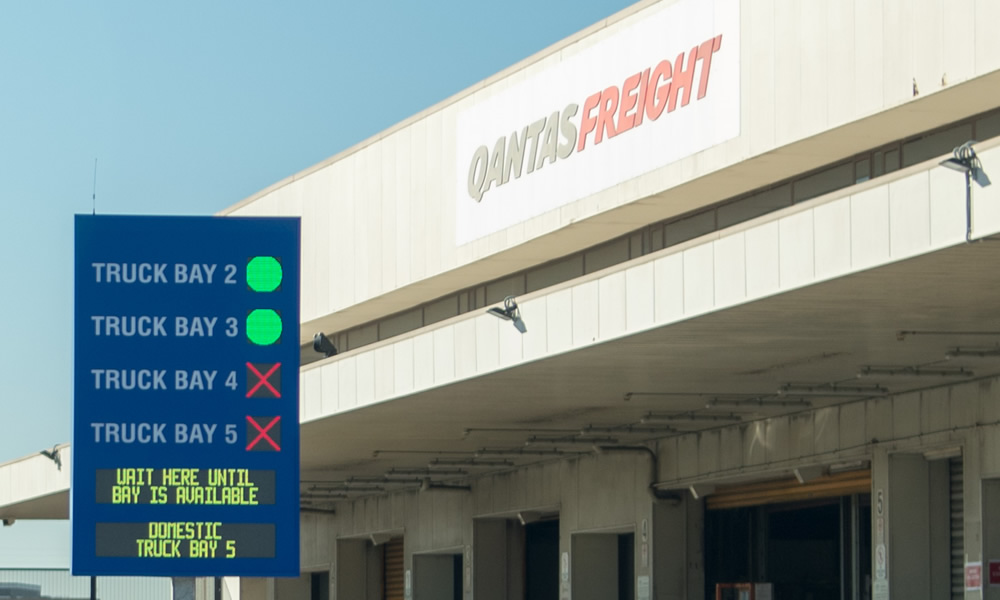QANTAS Freight

In the Terminal 2 freight section of Sydney’s Kingsford Smith airport, national carrier QANTAS operate several loading docks for transporting cargo around the world. With space at a premium and operations running around the clock, they looked to Park Agility to assist with automation in a narrow loading zone that frequently encountered congestion.
With four loading bays, it was not uncommon for all to be occupied on a regular basis. Problems would arise when additional trucks would arrive to find no bay available and left with no space to turn around or allow another truck to depart. To date, manpower has been used to manage congestion and bay usage, with two traffic controllers on duty 24 hours a day, 7 days a week. Now, using signage and technology, Park Agility have assisted QANTAS Freight with an automated solution that will save time and money.
Each of the four bays are monitored with inductive loops, with three per bay set in specific locations to allow the system to determine the length of the vehicle. Data from these loops is sent to two separate signs, located on approach to the loading dock and at the loading dock.
When a truck parks in a bay, a red cross indicates it is occupied and when it leaves, a green circle signifies availability. When all bays are occupied, a custom message panel notifies incoming drivers not to approach the dock and to wait for availability.
The high voltage that is underground at the airport meant the usual practice of running data cable underground was unsuitable, posing a challenge for signage location. As a result, LoRa (Long Range) was implemented – a low-power wide-area network (LPWAN) protocol – allowing wireless communications between the SenseIQ management system which is located in the terminal building and the Variable Message Signs located approximately 100m and 200m away from the loading docks.
In real time, bay status data from the multi inductive loop is communicated. Access to SenseIQ is available via mobile phone, tablet or computer allowing dynamic messaging to be updated as needed, to communicate information with incoming drivers on bay availability, closure, maintenance and more.
This complex installation went live in the third week of July 2020, with one traffic controller in place to help drivers transition to the new system. Over time, significant savings will be seen as familiarity with the automated system increases and the cost of manpower diminishes.
Download Solutions Guide
To download the Solutions Guide please enter your details below. We will only use this information to get in touch with expert advice.
